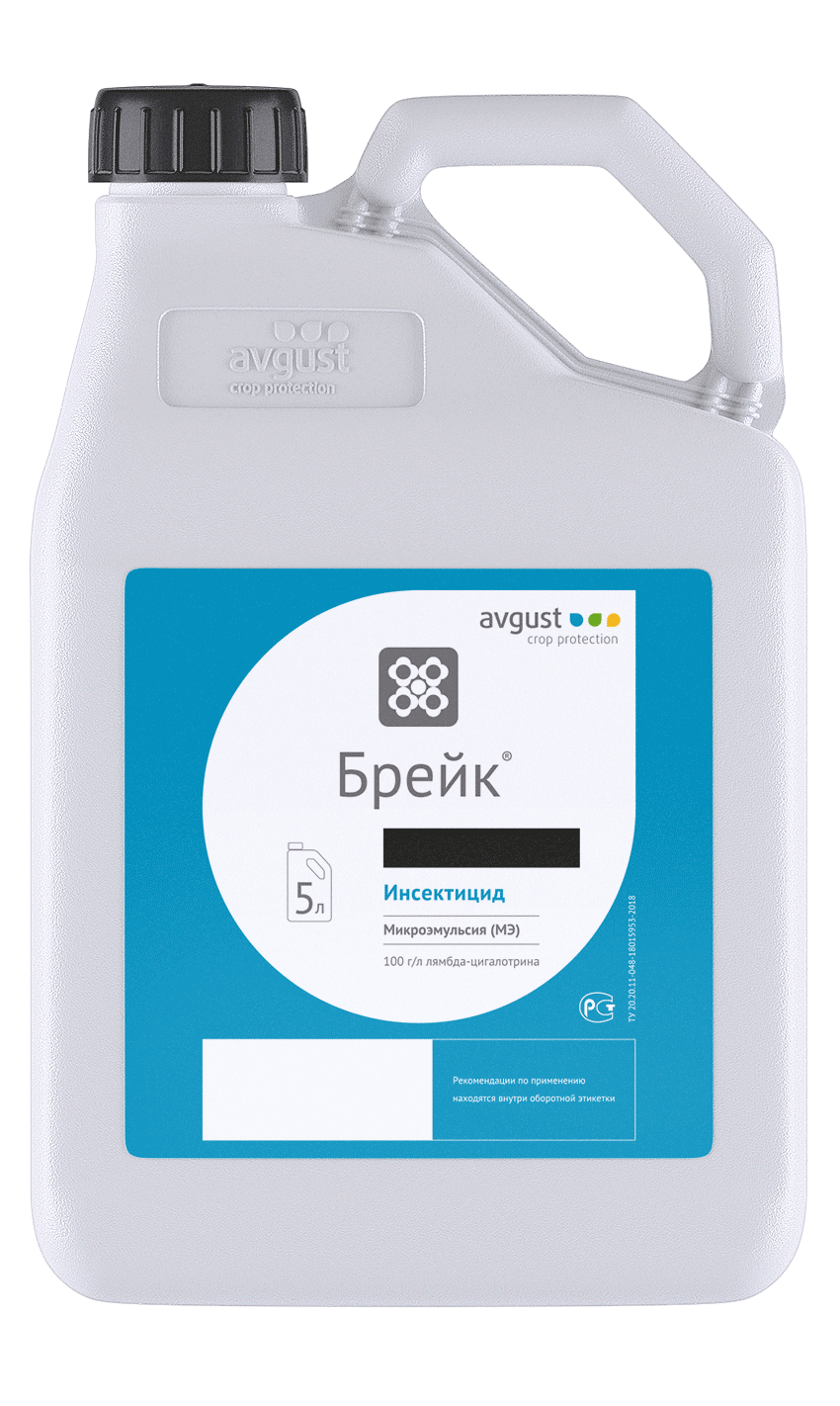
Breyk
lambda cyhalothrin, 100 g/l

lambda cyhalothrin, 100 g/l
Benefits of the drug:
• The most important rodent and Sucker of many crops destruction of pests
• three-way movement: contact, intestinal and residual
• very rapid loss of pests
Form of preparation:
Microemulsion. This high-tech formulas prepare the drug to high temperatures makes resistant.
Compatibility:
Break® is strongly alkaline or strongly acidic with the exception of drugs that have a reaction, in bak mixtures with most pesticides suitable.
Impact speed:
Harms within a few minutes after treatment Nanda lose their direction, they eat they stop and then die The norm in wheat is 0.1 l / ha, fleas in rapeseed, fiber flax, beets, corn, tomatoes, cabbage, peas, mustard at one-time processing permission for Grasshoppers it is given, in other cases – two.
Waiting time:
in cereal crops, peas and mustard– 28 days, in rapeseed – 50, in beets and corn – 20, in onions-25, tomatoes, cabbage, apples and grapes – 30 days,
fiber linen, alfalfa and on damaged areas waiting period. with Grasshoppers, arranged not laid out.
Resistance probability:
To prevent the appearance of resistance insek of other chemical classes of the drug- it is necessary to replace with thysides.
Limitations:
Average danger to bees 2-danger level (Border Protection Zone for bees – at least 4-5 km, flight of bees restriction – at least 5-6 days).
Working fluid consumption:
For processing seedlings – 100-200 l/ha, field (including vegetable) crops, as well as pastures and wild plants for spraying during the growing season – 200-400, vineyards-800 – 1200, in Gardens – 800-1500 l/ha
Mechanism of action:
Lambda-tsigalotrine to harmful insects has a contact-intestinal effect and uticular layer through pests quickly enter the body goes. Break® treated plants
remains on the surface for some time, residual activity demonstrates and its own pronounced drying effect due to the continued protection of crops.
Duration of protection:
at least 14 days.
Recommendations for use:
Plant processing pests appear during the growing season, seedlings pest- in the fight against riga – on crop seedlings, to Grasshoppers counter-is carried out during the development period. larvae. To the working solution of insecticide it is recommended to add auxiliary adhesive
Rodent of agricultural crops and other objects and contact for protection from a complex of sucking pests-
pyrethroid insecticide with intestinal action
| Crop type | Pests | Spending standard l / ga |
| Processing according to plant species | ||
| Wheat | Don flea beetles, cicadas | 0,1 |
| Wheat | Tortoise mites, aphids | 0,07 |
| Barley | Flies, saw flies | 0,07-0,1 |
| Sugar beet | Canas, juices | 0,07 |
| Raps | Cruciferous flea beetle, rapeseed flower beetle | 0,05-0,07 |
| Shadow | Aphids, Bean moth, Meadow moth, trips | 0,05-0,06 |
| Peas | pea worm, pea juice | 0,05-0,06 |
| Onion | Onion fly, thrips | 0,07-0,2 |
| Grapes and apples | Grape leaf mower, Apple flower beetle, brown marble fleas, Apple worm |
0,16-0,24 |
| Cabbage | Cabbage moth, whitefly, cabbage worm | 0,05 |
| tomato (open field) | Coac worm, brown marble fleas | 0,05 |
| Bede | Alfalfa Kandala, moths and other pest | 0,07 |
| Corn | Meadow moth | 0,07-0,2 |